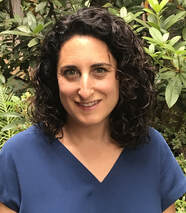 Liz Katz Liz Katz When the COVID-19 pandemic spread to the United States in March 2019, independent school leaders knew that every single decision needed to center on one thing: making school as safe as possible for their communities. As the spring continued, racist violence and the ensuing antiracist demonstrations emphasized that safety in schools requires the dismantling of policies and practices that center whiteness and perpetuate systems of privilege and inequality. The wisest leaders know that safety addresses many facets of experience: our bodies, our minds, our identities, and our relationships. A year ago, I talked about wellness using the metaphor of the motorcycle. If we think about our academic programs as a motorcycle, then wellness and mental health have traditionally been a sidecar--nice to have, but not necessary. What COVID-19 has taught us is that wellness is actually the road we are all driving on. Our academic program is only going to stay upright as long as the road is smooth. If we don’t take care of our community’s wellness, we’re all one bump away from disaster. What I hope we take away with us as we emerge from the COVID-19 pandemic is that wellness can’t be an add-on side-car of a program. For too long, we’ve encouraged our teachers and students to practice self-care and balance while constructing workloads and expectations that undermined those things. Moving forward, addressing wellness isn’t going to be as simple as teaching kids how to do deep breathing exercises. Instead, we need to change the way we do school. It’s a truism to say that crisis is both challenge and opportunity. In Fall 2019, most educators would have said that teaching their courses online was impossible. They would have said you can’t create a high school schedule that keeps kids in stable cohorts, or that they could have half their kids in their classroom and another half learning from home. And yet, by Fall 2020, they were doing all those things, and with successes to be proud of. If we can take one of the most basic assumptions of the twentieth century school--you have to be here to learn--and reconstruct it completely in just a few weeks, then we can also re-evaluate the elements of school that made it so difficult for our community to prioritize wellness. Because we’ve moved through so many iterations of school this year, we have the opportunity to ask our faculty and students what made a difference. Was it a later start time? Genuine acknowledgement that the systemic injustice in our schools must end? Teaching or taking fewer courses at a time? Significant professional time for faculty? Adjusting curriculum? We can also ask students what they missed: unstructured time on campus, advisory, sports, activities? It’s hard to say that the pandemic brought us gifts when it took so much away from so many. Looking back, however, we can see that the past thirty years in many schools narrowed a range of priorities for students until academic achievement overwhelmed them all. The pandemics pushed that range wider, so that health and safety, in all its forms, took up equal space, and that racial justice and equity were addressed with the urgency our communities deserve. As we move forward, academic leaders need to continue to maintain the values and practices that ensure every member of our community has the support, systems, and practices that allow them to thrive.
0 Comments
Leave a Reply. |
Don't miss our weekly blog posts by joining our newsletter mailing list below:AuthorsBrad Rathgeber (he/him/his) Archives
July 2024
Categories |

 RSS Feed
RSS Feed